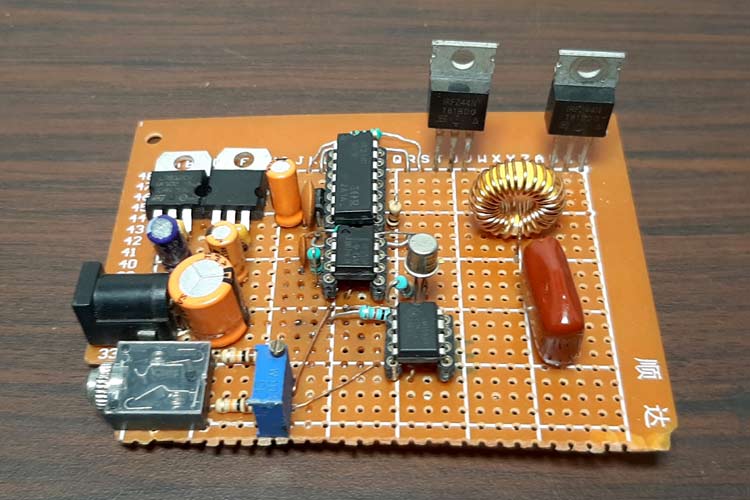An Amplifier or an operational amplifier (op-amp) circuit is commonly used in the automation, control and other electronic circuits of marine applications. The applied input signal is normally a voltage or a current signal. The purpose of an amplifier is to produce an output signal larger than that of the input signal.
Purpose of Amplifier:
As the name suggest, the purpose of an amplifier or an op amp is to amplify or increase the input signal to produce an output signal, which is much larger than that of the input, with a similar waveform as that of the input.
The main change in the output signal will be the increase in the power level. This additional power is supplied by a D.C voltage, which is externally provided. The output signal is controlled by the input signal in an amplifier.

Operation of Amplifier Circuit
The input of the amplifier consists of differential input voltage V+ input and Vinput and this difference in the voltage is amplified to produce a larger output. The op-amp equation can be given by:

Where A o/l – is open loop gain of the amplifier.
In an op-amp the magnitude of A o/l is very large which gives a larger output even when the input differential is small.
Other important properties
· It has a high output gain
· It has high input and low output impedance
· Bandwidth is in very high range
Applications of Amplifier Circuit
An amplifier circuit is popularly used in marine electrical/ electronic circuits and applications such as:
· It is used to amplify audio signal (loudspeaker, VHF)
· It is used as voltage and current regulator
· It is used as analog to digital converter and vice-versa
· It is used as a servo amplifier in motors
· The output signal from amplifier is supplied to a relay in a circuit
Electrical Shock
When we talk about accidents on a ship, an electrical shock is the worst of all kinds. Electrical wires and connections are present everywhere on a ship and it is important to prevent yourself and others from getting a major electrical shock.
Steps to Minimize the Risk of an Electrical Shock
· Start with the first round of the day; check all electrical motors, wiring, and switches, for abnormal sounds, variation in temperatures and loose connections
· Ensure that all electrical connections are inside the panel box so that no one can touch them accidently
· In accommodation area multiple sock t plugs shouldn’t be used
· Turn off the breaker before starting any work on an electrical system
· Use ply cards and notice board as much as possible to inform others about the ongoing work to avoid accidental “starts”
· Double check electrical tools such as portable drills for any loose wires before attempting any job
· Always wear protective clothing, rubber gloves, rubber kneepads and safety shoes to avoid risk of shock
· Use electrically insulated handle tools for working or checking electrical systems
· Before working, remove jewelry, wrist bands and other conductive items
· When working or removing multiple wires, tape off all but the one wire you are working on
· Try as much as possible not to work on live system and even if you do so, be a professional and work carefully, taking all necessary safety precautions and with utmost concentration
· During working in group or pair, organize a tool box meeting and discuss the procedure, risk and hazards of the job in hand
· If you don’t know about the system, ask for assistance. Don’t wo k without knowing the system
· Always think first about your personal safety and safety of fellow seafarers while carrying out any electrical work on board ships.


